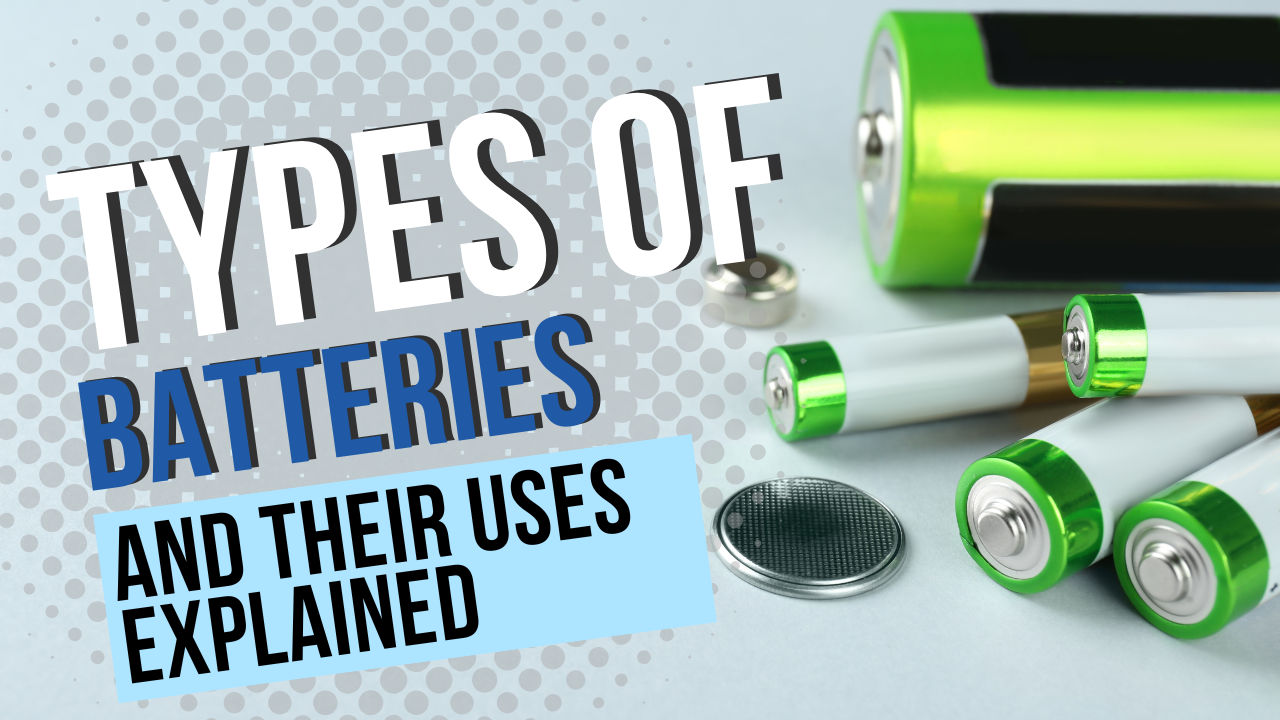
Rechargeable Batteries: Types, Benefits, and Best Uses
Rechargeable batteries changed the world of energy for good. They offer an eco-friendly and cost-efficient alternative for non-rechargeable batteries. From household electronics to solar systems, these batteries became essential for daily life.
There are a wide range of rechargeable battery types, which can differ in usages and benefits. If you are wondering which type of battery is the best type for you, then you are at the right place. In this guide, we will dive into rechargeable batteries with detailed explanations for each type.
Why Choose Rechargeable Batteries?
There are plenty of reasons behind the global shift towards rechargeable batteries.
1. Cost Saving
Although rechargeable batteries may seem expensive at first, they pay for themselves quickly. A single rechargeable battery can be reused hundreds of times, replacing the need to constantly buy new disposable ones. Over time, this significantly lowers your expenses.
2. Eco-Friendly
Disposable batteries contribute to massive amounts of toxic waste every year. Rechargeable batteries, on the other hand, minimize waste since you reuse the same unit multiple times. This helps reduce pollution and conserves natural resources.
3. Long Lifespan
Imagine having to buy a new battery every week? Modern rechargeable batteries are built to endure hundreds—even thousands—of charge cycles. That means one battery can last for years, making them a more reliable and durable choice compared to single-use alternatives.
4. Better Performance
Rechargeable batteries deliver consistent power output. Unlike disposable batteries that weaken gradually, rechargeable ones often maintain steady performance until they’re nearly empty, which is crucial for high-drain devices like cameras, gaming controllers, and tools.
Types of Rechargeable Batteries and Their Uses
The types of batteries vary and change depending on the usage. However, there are many different types of rechargeable batteries you can choose from, including:
1-Nickel-Cadmium (NiCd):
- Usage: Power tools, emergency lighting, and medical equipment.
- Key Features: Durable and able to handle deep discharge cycles, but less eco-friendly due to cadmium content.
2-Nickel-Metal Hydride (NiMH)
- Usage: Household electronics like cameras, toys, flashlights, and remote controls.
- Key Features: Higher capacity than NiCd, environmentally safer, and a popular replacement for disposable AA and AAA batteries.
3-Lithium-Ion (Li-ion)
- Usage: Smartphones, laptops, tablets, digital cameras, and electric vehicles.
- Key Features: Lightweight, high energy density, long lifespan, and fast charging. They dominate modern portable electronics.
4-Lithium Polymer (Li-Po)
- Usage: Drones, RC cars, wearables, and slim smartphones.
- Key Features: Flexible design (can be made very thin), lightweight, and high performance, but requires careful handling.
5-Lead-Acid (Rechargeable Lead Batteries)
- Usage: Cars, motorcycles, UPS systems, and backup power supplies.
- Key Features: Reliable and cost-effective for large power needs, though heavier and bulkier than other types.
6-Rechargeable Alkaline
- Usage: Low-drain devices like remote controls, wall clocks, and radios.
- Key Features: Affordable and convenient, but less powerful and shorter-lived compared to NiMH or Li-ion batteries.
What to Consider When Buying a Rechargeable Battery
1. Type of Battery
Not all rechargeable batteries are the same, and they have a particular function. For instance, Lithium-ion (Li-ion) batteries are best for smartphone, laptop, and electric car usage because of their high energy density, whereas Nickel-Metal Hydride (NiMH) batteries suit general consumer electronics such as cameras and children's toys.
2. Capacity (mAh or Ah)
Capacity tells you how long your device is going to remain powered by the battery before needing to be recharged. It's measured in milliamp-hours (mAh) for tiny batteries or amp-hours (Ah) for large ones. The higher, the longer the battery will last on a single charge.
3. Voltage
Every device needs to be powered at a specified voltage. In case the battery voltage is too low, your device will not work; when too high, it’ll cause damage to your device. Check the voltage needs in your device's user manual and ensure the rechargeable battery is compatible with it to avoid malfunctions or safety risks.
4. Lifespan (Charge Cycles)
Rechargeable batteries are not immortal. Their lifespan is in terms of charge cycles—the amount of full charges and discharges of the battery before it starts to lose capacity. A decent battery would last hundreds or thousands of cycles, which makes it a worthwhile investment in the long term.
FAQs
- How long do rechargeable batteries last?
The lifespan of a rechargeable battery depends on its type and usage. On average, good-quality batteries can last anywhere from 500 to 1,000 charge cycles, which can translate to several years of use with proper care.
- Can rechargeable batteries be used in any device?
Most rechargeable batteries (like AA or AAA NiMH) can replace disposable ones in household devices. However, always check the voltage and compatibility of your device before switching, as some electronics are designed for specific battery types.
- Are rechargeable batteries safe?
Yes, modern rechargeable batteries are generally safe, especially when purchased from reputable brands. Many include built-in safety features like overcharge protection.
- Which type of rechargeable battery is best for everyday use?
For most household electronics such as remote controls, flashlights, and toys, NiMH batteries are the best option. For smartphones, laptops, and modern devices, Lithium-ion batteries are the preferred choice due to their high energy density and long lifespan.

